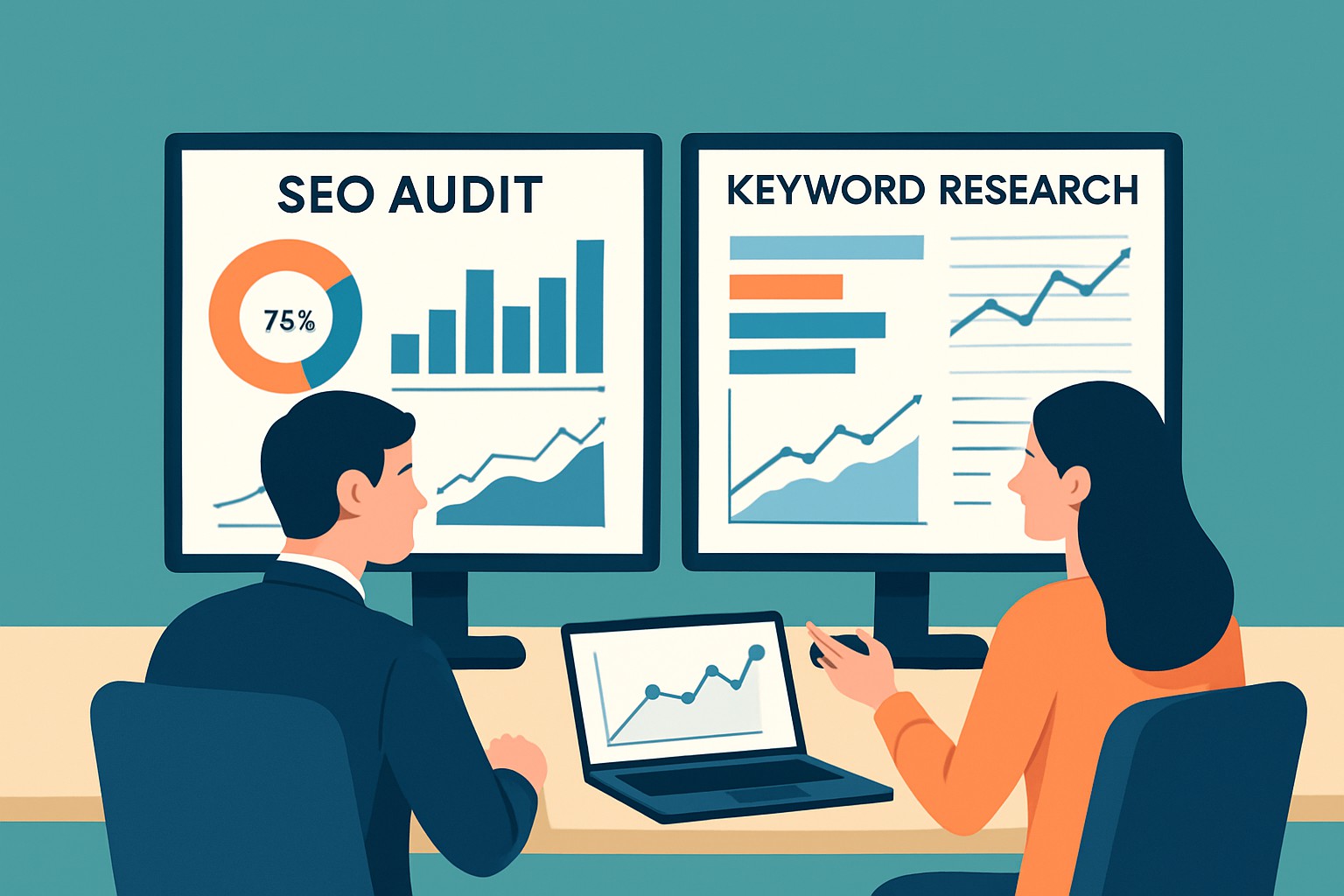
SEM vs SEO vs SEA
Confused by SEM, SEO, and SEA? This clear guide breaks down each concept, showing how they work toge...

Auditing SEO for SaaS businesses is absolutely key when it comes to fueling organic growth and upping your online game. SaaS SEO audits zero in on specific technical bits, content nuances and user experience quirks that really matter for subscription-based websites. A thorough audit can shine a light on hidden roadblocks such as site speed hiccups and whether your content actually hits the mark with user intent. It can also reveal pesky technical glitches and those little areas where your competitors might be sneaking ahead.
General SEO audits typically take a broad look at overall site health and keyword use but when it comes to SaaS SEO audits there’s a whole different ball game. You’ve got to tackle specific challenges like optimizing feature-focused content and managing subscription funnels that can make or break conversions. You also need to wrangle SaaS-specific terminology and keep pace with lightning-fast product updates.
Alright, buckle up it’s time to dive into the not-so-glamorous but utterly important world of SaaS SEO audits. Trust me, this prep work might sound like a snooze fest, but it’s the secret sauce to making your software stand out in the crowded digital marketplace. So, whether you’re a seasoned pro or just dipping your toes into SEO waters, getting your ducks in a row before the audit will save you from a world of headaches down the line.
It’s a good idea to gather all the necessary tools and secure access to analytics and backend systems. Then really nail down your SaaS business goals.
A technical SEO review is a important piece of the puzzle for SaaS audits. It ensures your site works well with search engines, can be accessed and crawled without issues, loads swiftly on every device, and has a clear no-nonsense site structure. Reviewing indexing and mobile usability sets the stage for other improvements.

Visual overview of a SaaS website's technical SEO audit dashboard highlighting critical site health indicators
On-page SEO is about making sure your SaaS site content hits the mark with the keywords your potential customers type into search bars. It typically focuses on product pages, blog posts and landing pages to keep everything clear, relevant and optimized with metadata that matches what users are hunting for.
Off-page SEO zeroes in on your site's reputation and authority—the kind that shapes how Google and others see you. For SaaS companies this often means diving into backlink profiles and checking referral sources. It also involves monitoring social mentions and getting a feel for how the brand is perceived in the industry.
A smooth user experience is important in SaaS SEO because it directly influences conversion rates and how long customers stick around. Take a good look at user flows, how the site behaves on mobile devices, page layouts and trial signup funnels to ensure visitors can glide through them without hiccups or frustration.
Knowing how your SaaS product stacks up against the competition can help you uncover sneaky keyword gaps and discover fresh content opportunities. It also gives you a clearer picture of backlink strengths.
| Competitor | Organic Traffic | Keyword Rankings | Backlink Quantity | Backlink Quality | Domain Authority | Content Volume | Content Frequency |
|---|---|---|---|---|---|---|---|
| SaaSCo A | 150K/month | 850 keywords | 3000 | High | 75 | 250 articles | Weekly |
| SaaSCo B | 120K/month | 780 keywords | 1800 | Medium | 68 | 150 articles | Bi-weekly |
| SaaSCo C | 90K/month | 620 keywords | 2200 | High | 70 | 200 articles | Monthly |
This side-by-side glimpse highlights some striking differences in traffic size, keyword reach, backlink quality, and the pace of content production among these leading SaaS contenders. It’s fascinating to see how each plays its cards in this competitive deck.
Once you have wrapped up the audit, compile your findings into a clear and straightforward report that focuses on practical and actionable insights.
It’s the glue that holds the whole process together. Try leaning on visuals and straightforward metrics to keep both stakeholders and technical teams genuinely engaged rather than nodding along just to be polite. Use prioritized action lists to maintain focus.
SaaS SEO audits bring unique challenges like keeping up with product pages that change by the minute, understanding complex keyword intent, balancing detailed technical SEO with content that informs, and tracking conversions specific to SaaS.
19 articles published
With over two decades of experience navigating the intricate realms of online marketing, Bryson Gallagher is renowned for his strategic prowess and data-driven methodologies, equipping organizations with the tools to seamlessly engage global audiences.
Read Pages
Confused by SEM, SEO, and SEA? This clear guide breaks down each concept, showing how they work toge...

Discover how publishers can harness content marketing strategies step-by-step to boost engagement, d...

Explore detailed insights into SEO costs for small businesses, helping you budget wisely and choose...

Master online reputation SEO tactics to actively control your brand’s online image with practical st...